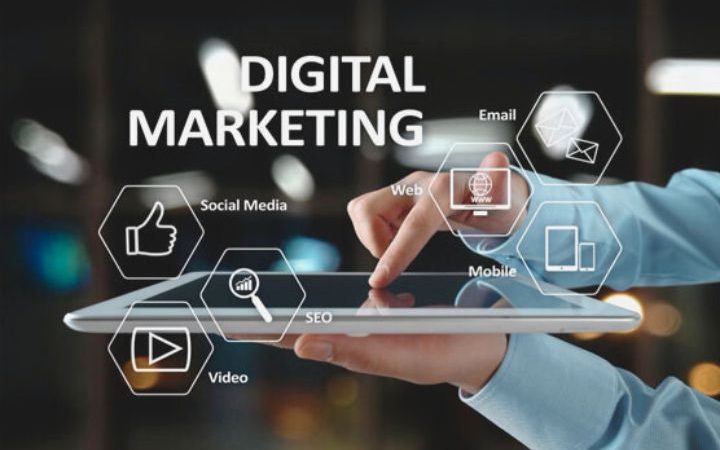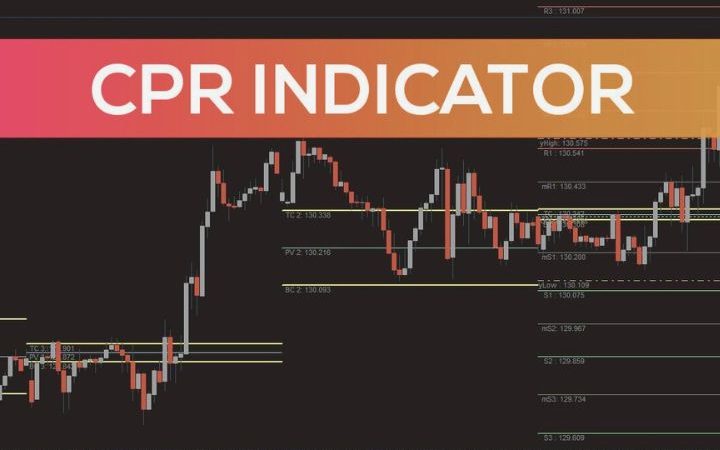What is A Digital Marketing Plan, And How Is It Done?

A Digital Marketing plan consists of a document that contains all the objectives and the planning of marketing strategies and actions to be developed with the aim that everything that is stated in the document has a justification and that the objectives set can be achieved. To do this, you must first define what you want to achieve, to whom you want to direct communication and how the actions will be carried out.
Table of Contents
Digital Marketing plan definition
Digital Marketing is a form of online marketing services that only uses new media and digital advertising channels such as the Internet, mobile or IoT and that thanks to the power of technology allows you to create personalized products and services and measure everything that happens to create unique and memorable customer experiences for mutual benefit.
The Digital Marketing plan is a very elaborate report in which we specify the objectives to be achieved and the strategies and tactics that we will use to make them. It is vitally important that this document is planned correctly and is the result of in-depth research.
The ability to develop successful Digital Marketing Plans can be a differential point in a professional in this sector. Not only does it help justify what has happened so far, but it also explains the direction the company intends to take.
Developing a Digital Marketing Plan?
When developing an Online Marketing plan, there are several key points to keep in mind.
The First Contact With The Client
Before starting a Digital Marketing plan, it is vitally important to establish the first contact with the client to detail and specify what the objectives are. In this first contact, we must get as much information as possible from the client so that the entire strategy is clear when formulating the marketing plan. All information is welcome to avoid that when we present the digital marketing plan, we have overlooked something or are confused by not having previously consulted them.
#1. Analysis Of The Situation
First of all, we must be very clear about what the brand is, what it does, why it does it, its justification and its reason for being, its USP (only selling proposition). In short, to know, the more detail, the better, your target audience.
The first concept to include in an Online Marketing plan has to be the study of the current situation. That is why we will study the environment by carrying out an analysis, both internal and external, on the sector in which we operate and in which the product or service in question is framed, always making apparent demographic, economic, technological, political or socio-cultural factors, which are vitally important. In the same way, we will analyze the direct competition to improve and take advantage of any opportunity that appears.
Online Presence
At the same time, and very importantly, before making an online marketing plan, you have to know what your online presence is, know what online platforms you have or don’t have, and know what history this online presence of the brand has.
At this point you have to pay special attention to the research to keep in mind the tools that have been used to maintain your online presence, as well as what strategy and tactics they have followed in the past. This information is essential to be able to follow a line of communication that does not depart from the one established until now.
To finish the situation analysis, we will have to make a great effort to know in detail what are the objectives that we want to pursue through the digital marketing plan and what budget we have for its execution.
In this first section, it is worth highlighting the importance of the definition of objectives, knowing the target audience in detail, and carrying out the SWOT analysis, which can help a lot to get the strategy right, taking advantage of opportunities and detecting weaknesses to be improved.
Online Research
Once we know what the client wants, the brand information, and we are clear about what our target audience is like, it is time to start conducting detailed research on the online presence, both of the brand and of the competition. For this, the use of both free and paid tools is highly recommended to detect the status of the brand and that of competing companies.
Tools like SEMrush, Sistrix, Moz, aHrefs, or the social networks themselves can help a lot to identify the state of the online presence, offering data that makes research much easier, as they save us from doing many things manually.
Analytical data such as daily and monthly visits, direct, organic and paid traffic, bounce rate, indexed pages, number of backlinks, number of fans and followers, level of engagement, etc. These are some of the metrics that we have to take into account when analyzing the brand and fundamentally, the competition.
1. Marketing Objectives
Marketing objectives are those that make business objectives be met. These objectives may consist, for example, of increasing traffic to the web through SEO or SEM or managing to capture leads (emails or contact numbers), among others.
A fundamental detail when establishing objectives is to follow the basic rules for achieving objectives, the SMART criteria (Specific, Measurable, Achievable, Realistic, and Temporarily limited).
(S) Specific: it is necessary to look for the concretion, in order to identify what really wants to be achieved.
(M) Measurable: it is essential that the objectives be quantified or qualified in some way to compare the result.
(A) Achievable: taking into account the work of all the components involved in the project, it is necessary to evaluate if the objectives are viable, and there is the possibility of achieving them.
(R) Realistic: when setting the objectives, you have to keep your feet on the ground and not speculate much with the objectives; otherwise, afterward, the results will not be evaluated.
(T) Temporarily limited: the execution times must be marked very well to control the start and end of the project.
For the control and monitoring of the objectives, it is recommended to design a Dashboard, which will facilitate daily, weekly, monthly or annual control in order to be able to keep track and check progress.
#2. Defining The Objectives
Once we have all the research done and the situation we start from is known, it is time to start designing the digital marketing plan. For this, we have to be very clear about the business objectives and the marketing objectives, the latter being the ones that must act as the root of the business objectives.
Business Objectives
The business objectives are purely economic, measurable in the short term. As its name indicates, those that are synonymous with business viability depend on whether they are met. A clear example of a business objective is to increase turnover compared to the previous year or to improve market share, which means growing, unlike the competition.
#3. Define Strategy And Tactics
Once we have the objectives set, it is time to define what strategies and tactics to propose to achieve them.
The strategy is formed by a set of applied actions whose purpose is to develop the established objectives. An example of a strategy is, for example, developing an Inbound Marketing or link building campaign.
The tactics, are possibly the ones that involve the most work, have to do with the way, and the method of carrying out the tasks. They are more specific tasks or functions, for example, making a post to publish 2 daily publications on the Blog.
A clearer example of strategy and tactics is as follows:
- Strategy : Promote a brand.
- Tactics : Create ads in the mail online news media, hold an event, create a campaign in Google Adwords.
The Final Proposal To The Client Of The Digital Marketing Plan
Once we have the Digital Marketing Plan , we proceed to make the final proposal that will be delivered to the client for subsequent or non-approval. For this, it is important to have a lot of creativity so that all the information collected can be shown in the best way, and thus the client is convinced of what is being proposed.
#4. Budget
The preparation and presentation of the budget is one of the most decisive actions when making the digital marketing plan, since a large proportion of the project presented depends on it. In the budget, it is essential that all the details are explained, broken down and justifying each action that will be carried out. The client needs to know what their budget is attributed to at all times, and therefore, do not forget to list all the strategies and tactics.
Execution Of The Digital Marketing Plan
At this point, synonymous with the fact that the client has approved the plan, the online scenario should be prepared where the tactics will be developed following the outlined strategies. The tasks at this stage are already oriented so that, when executing the actions set out in the Marketing plan, everything is prepared, and we do not leave anything to improvise, and we can execute everything without waiting for something to change or be done.
The most generic actions that can be highlighted at this point are the following:
- Define the tone of communication.
- Configure and design all the profiles and platforms where you have a presence or want to have.
- Define keywords.
- Prepare a model report or Dashboard.
- Create a calendar of the actions to be carried out.
Once we have prepared the ground, it is time to take action! Everything marked in the Digital Marketing plan must be executed. For this, it is highly recommended to follow the calendar and that all the affected departments work towards the same address.
Digital Marketing Plan For A Company
To focus these actions with a limited budget on a local audience, both in web positioning, as in social media and content marketing. Together they empower each other by greatly improving the reach of a web page.
Keyword Analytics At The Local Level
The first thing that we will do in our web positioning campaign is to select the local keywords. Based on these keywords, we will optimize our website.
For analytics, we are going to use the new Keyword Planner offered by Google Adwords, which provides us with an estimate of the level of monthly searches for each keyword. It is useful to define a list of suggested keyword combinations to focus on to reach the potential client that you are searching for in Google.
Optimizing The Seo On Page Of Our Page.
The main factors for a correct SEO optimization On page are:
- Titles : with the most generic keywords but in a logical and natural way.
- META Description : it is generally shown in the SERPs (search results) so a correct independent description for each page improves the CTR (click ratio).
- Content in wide and quality text : with at least 300 – 350 words for each page and section, always natural and focused on the user.
- Intuitive and simple navigation : so that a user (and a search engine ) can get from one point of the web to another with the minimum number of clicks possible.
- SMO ( Social Media Optimization ): to viralize our content and our brand on social networks, something essential today for natural and effective SEO. The ideal is to visibly place the buttons to share on the main social networks (and segmented networks according to our sector).
- Indexability : and it is that although the intuitive navigation mentioned in the previous point makes global indexability improve, it is always possible (and recommended) to lend a hand to the search engine to crawl our site more easily. To do this, we only need to create a sitemap in.XML format and link it from a Google Webmaster Tools account.
Registration In The Google Platform For Local Business: Google My Business.
This Google platform greatly enhances our visibility for local searches.
Social Media, Searching And Reaching Our Potential Clients.
There are a large number of segmented social networks available that should be selected according to our sector. The main social networks are:
- Facebook , as it is the majority social network in Spain in terms of users and their involvement.
- Twitter , a network in continuous expansion in our country that provides a great environment for direct conversation between the brand and the user.
Content Marketing, Promoting Web Positioning And Social Networks
Content Marketing is a technique of great potential for organic SEO and Social Media, and more common practice is to integrate a blog within its website and work its contents.
Let’s see the benefits of Content Marketing for web positioning and Social Media:
- Fresh content updates, something Google likes a lot after the latest changes to Google Panda.
- More indexable quality content, higher positioning by SEO Long Tail (for secondary keywords).
- Quality content is likely to be virtualized on social networks and linked to other means (both possibilities greatly improve SEO, and traffic from social networks).
- Constant updates in the company’s social profiles, a greater movement for an active Social Community with participatory users.
But let’s see the indispensable conditions so that Content Marketing is really done correctly and effectively:
- The contents must be original, of quality
- The text should be interspersed with images (or videos ) to make it more attractive and lighten your reading.
- We can end each content with a call to action. If we have a comment column, tell us what you think, or if we want to increase the community, follow us on Facebook, and find out everything.
- Remove secondary keywords from the Blog’s internal content, which will greatly enhance Long Tail traffic from Google and other search engines.
- Showing other related content at the end of each content improves user behavior by extending the time spent on our website and reducing the bounce rate.
Also Read : What is A Social Media Manager, And Why Should You Specialize In This Profile?






